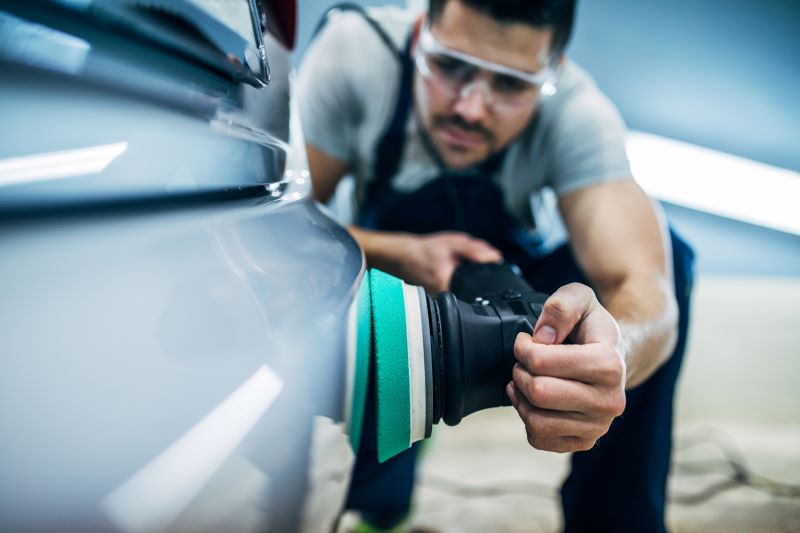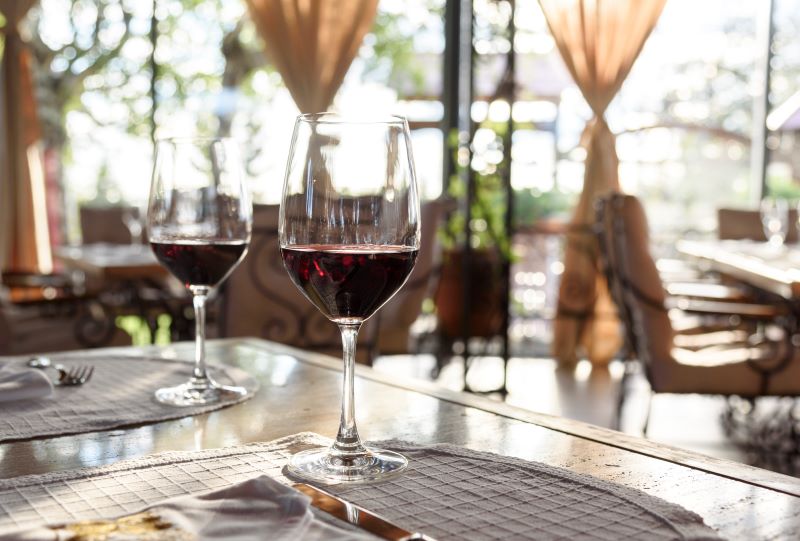In the refined ambiance of wine restaurants, unforeseen accidents can disrupt the enjoyment of a fine dining experience. However, the presence of a personal injury attorney can offer a sense of security and recourse in such situations. Beyond the obvious legal implications, these legal professionals can provide unexpected support and expertise that go beyond the surface level. By delving into the intricacies of liability, insurance negotiations, and legal proceedings, personal injury attorneys can unveil a network of assistance that may otherwise remain unnoticed by the average patron.
Key Takeaways
- Identifying liability for accidents in wine restaurants.
- Assisting in navigating complex legal processes.
- Negotiating with insurance companies for fair compensation.
- Providing legal representation and support in injury claims.
- Offering expertise in advocating for clients’ rights and interests.
Initial Consultation and Case Evaluation
During the initial consultation with a personal injury attorney specialized in cases related to wine restaurants, the focus is primarily on evaluating the details of the incident and determining the potential merits of the case. Client communication plays a crucial role during this phase, as the attorney gathers information regarding the circumstances surrounding the injury, the extent of the damages suffered, and the impact on the client’s life. Open and transparent communication enables the attorney to understand the client’s concerns and goals, laying the foundation for a strong attorney-client relationship.
Simultaneously, the attorney begins formulating a legal strategy based on the information provided. This involves assessing the strengths and weaknesses of the case, identifying potential legal theories that could be pursued, and outlining the steps needed to achieve a favorable outcome. By developing a comprehensive legal strategy early on, the attorney can effectively navigate the complexities of the legal system and advocate for the client’s rights in a strategic and informed manner.
Investigation of the Accident Scene
The investigation of an accident scene is a critical aspect of building a strong personal injury case. Through a meticulous scene analysis process, personal injury attorneys can uncover crucial details that may help determine liability. Evidence collection techniques such as gathering witness statements and preserving physical evidence play a key role in establishing the facts surrounding the accident.
Scene Analysis Process
Conducting a thorough investigation of the accident scene is a critical step in the process of scene analysis for personal injury attorneys specializing in cases related to wine restaurants. This phase involves interviewing witnesses and gathering evidence to reconstruct the events leading up to the incident accurately. Interviews with witnesses can provide valuable insights into factors such as the actions of those involved, the conditions at the time of the accident, and any potential hazards that may have contributed to the incident. Gathering evidence, including photographs, videos, and physical evidence from the scene, helps establish a clear picture of what transpired. By meticulously documenting and analyzing these elements, personal injury attorneys can better understand the circumstances surrounding the accident and determine liability. The scene analysis process plays a crucial role in building a strong case and advocating for the rights of individuals who have suffered injuries in wine restaurant accidents.
Evidence Collection Techniques
To effectively gather evidence at the accident scene, personal injury attorneys employ meticulous techniques aimed at reconstructing the events leading up to the incident with precision and accuracy. Witness interviews play a crucial role in understanding the sequence of events and establishing liability. Attorneys meticulously interview witnesses to gather firsthand accounts and perspectives, which can provide valuable insights into the circumstances surrounding the accident.
In addition to witness interviews, surveillance footage is another essential piece of evidence collection in personal injury cases. Surveillance cameras located in and around the accident scene can provide invaluable visual evidence of the events leading up to the incident. Attorneys carefully review surveillance footage to identify key details, such as the actions of the parties involved, the presence of any hazards, and other relevant factors that may have contributed to the accident.

Identification of Abogados de Accidentes de Auto Bakersfield Liable Parties
Identifying the parties responsible for an accident in a wine restaurant is crucial for determining legal accountability. Through a careful analysis of the incident, it becomes possible to assign liability accurately. Understanding the roles each party played in the situation is essential for a thorough assessment of the case and ensuring that justice is served.
Party Responsibility Clarity
In cases involving personal injury at wine restaurants, the process of determining liable parties can be complex and multifaceted, requiring a thorough analysis of the circumstances surrounding the incident. When assessing liability in such cases, legal culpability is a crucial aspect that necessitates careful consideration. Identifying the responsible parties involves examining various factors, such as the actions or negligence of the individuals involved, the duty of care owed in the specific situation, and any relevant laws or regulations governing the establishment.
A personal injury attorney plays a vital role in clarifying party responsibilities by delving into the specifics of the incident, gathering evidence, and evaluating the extent of each party’s involvement. Through a detailed liability assessment, the attorney can determine the parties that may be held accountable for the injuries sustained. This clarity is essential for pursuing legal recourse and seeking compensation for the damages incurred. By navigating the complexities of party responsibility in personal injury cases at wine restaurants, a skilled attorney helps clients understand their options and rights in seeking justice.
Legal Accountability Determination
Determining legal accountability in personal injury cases at wine restaurants requires a meticulous examination of the parties potentially liable for the injuries sustained. When navigating the complexities of such cases, effective courtroom strategies and adherence to proper legal procedures are imperative. Personal injury attorneys play a crucial role in investigating the circumstances surrounding the incident to identify all parties that may bear legal responsibility.
Courtroom strategies employed by skilled attorneys often involve gathering evidence, interviewing witnesses, and reconstructing the events leading to the injury to establish liability. This process demands a thorough understanding of legal procedures and Abogados de Accidentes de Auto Bakersfield case law to build a strong argument for holding the responsible parties accountable.
Liability Assignment Analysis
Through meticulous examination and scrutiny of the circumstances surrounding a personal injury incident at wine restaurants, the process of assigning liability involves identifying all parties potentially responsible for the injuries sustained. This liability assessment is crucial for effective risk management and ensuring that justice is served. Key aspects of liability assignment analysis in wine restaurants include:
- Identification of Negligent Staff: Determining if any employees acted negligently, leading to the injury.
- Evaluation of Restaurant Policies: Assessing whether the restaurant had adequate safety protocols in place.
- Vendor or Supplier Responsibility: Exploring if the injury resulted from a defective product supplied to the restaurant.
- Property Owner Liability: Investigating if the property owner where the restaurant is located holds any responsibility for the incident.
Negotiation With Insurance Companies
When engaging in negotiations with insurance companies as a personal injury attorney representing clients in wine restaurants, it is crucial to strategically navigate the process to achieve optimal outcomes for the injured party. Claim evaluation and settlement strategies play a vital role in this phase. Thoroughly assessing the claim, including gathering evidence, understanding the extent of the injuries, and calculating damages, is essential to build a strong negotiation position.
Moreover, employing effective compensation tactics is key to securing a fair settlement for the injured party. This involves considering various factors such as medical expenses, lost wages, pain and suffering, and future rehabilitation costs. Crafting a comprehensive demand package supported by evidence and legal arguments is crucial in advocating for the client’s best interests during negotiations with insurance companies.
Advocacy for Fair Compensation
In advocating for fair compensation on behalf of clients injured in wine restaurants, a meticulous approach to presenting compelling evidence and persuasive legal arguments is essential. Personal injury attorneys play a crucial role in guiding individuals through the complexities of compensation advocacy, providing the necessary legal assistance to ensure a fair settlement. Here are key aspects of their role in advocating for fair compensation:
- Thorough Case Evaluation: Attorneys conduct a detailed assessment of the client’s case, gathering relevant information and evidence to support their claim.
- Negotiation Skills: They leverage their expertise in negotiation techniques to engage with insurance companies or the opposing party to secure a fair settlement for the client.
- Legal Strategy Development: Attorneys devise a strategic plan tailored to the specific circumstances of the case, aiming to maximize the compensation entitled to the injured party.
- Client Representation: Through every step of the legal process, attorneys advocate for their clients’ best interests, ensuring they receive the compensation they deserve for their injuries sustained in wine restaurants.
Representation in Legal Proceedings
Representation in legal proceedings requires personal injury attorneys to skillfully navigate the complexities of the judicial system while advocating for their clients’ best interests. When it comes to courtroom representation, these attorneys play a crucial role in presenting a compelling case on behalf of their clients who have suffered injuries in wine restaurants. They are well-versed in the intricacies of personal injury law and are adept at building a strong legal defense to support their clients’ claims.
In legal proceedings, personal injury attorneys leverage their expertise to gather evidence, interview witnesses, and collaborate with experts to strengthen their case. They meticulously prepare for trial, ensuring that all necessary documentation and arguments are in place to present a convincing argument in court. Additionally, these attorneys are skilled negotiators who can engage with opposing counsel to seek a favorable outcome for their clients. By providing dedicated courtroom representation and effective legal defense, personal injury attorneys offer invaluable support to individuals seeking justice for injuries sustained in wine restaurants.
Settlement Negotiations
During settlement negotiations, personal injury attorneys work diligently to secure favorable resolutions for their clients who have been injured in wine restaurants. These legal professionals leverage their settlement strategies and legal expertise to navigate the complexities of reaching agreements that address the damages incurred by their clients. Here are key points to consider during settlement negotiations:
- Understanding Settlement Strategies: Attorneys assess the situation and develop tailored strategies to maximize the potential settlement amount.
- Utilizing Legal Expertise: They apply their knowledge of personal injury law to strengthen their client’s position during negotiations.
- Employing Negotiation Tactics: Attorneys use effective communication and bargaining techniques to advocate for fair compensation.
- Exploring Compensation Options: They explore various compensation options, such as medical expenses, lost wages, and pain and suffering, to ensure comprehensive coverage for their client’s injuries.
Ongoing Legal Support and Guidance
For individuals navigating the aftermath of personal injuries sustained in wine restaurants, ongoing legal support and guidance from experienced attorneys prove invaluable in ensuring a comprehensive understanding of their rights and legal options. These professionals provide a pillar of support by offering continuous assistance in navigating the complexities of personal injury cases. Through ongoing legal support, individuals can benefit from the expertise of attorneys in devising a sound legal strategy tailored to their specific case. Attorneys ensure that clients are well-informed about the progression of their case, guiding them through each step of the legal process.
Moreover, ongoing legal support involves meticulous case preparation, where attorneys gather evidence, interview witnesses, and strategically plan the best approach for achieving a favorable outcome. By having a dedicated legal team provide continuous guidance and support, individuals can approach their personal injury cases with confidence and assurance that their legal rights are being protected. This ongoing assistance not only aids in the legal strategy but also helps alleviate the stress and uncertainties often associated with personal injury claims.
Conclusion
In conclusion, a personal injury attorney serves as a beacon of guidance and support for individuals navigating the complexities of seeking compensation in wine restaurants. Like a skilled navigator guiding a ship through treacherous waters, they offer a steady hand and expert knowledge to help clients navigate the legal challenges that may arise from accidents or injuries in such establishments.



